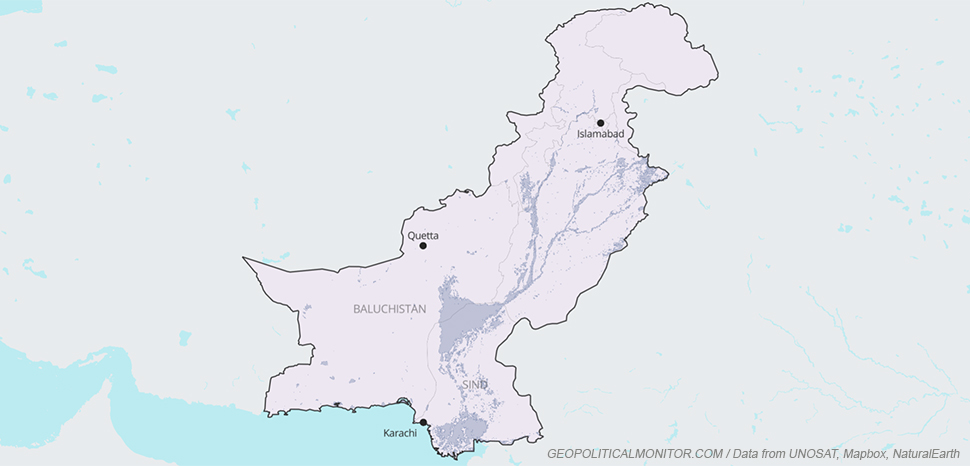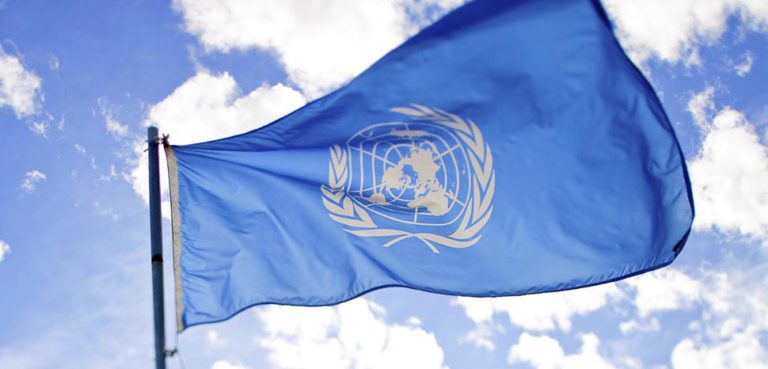Summary
A wet season that has produced over three times the 30-year average in rainfall is causing extensive flooding in Pakistan, resulting in at least 1,000 deaths since mid-June. Some 33 million people have been affected across a long band of territory along the banks of the Indus River, stretching from the Himalayan headwaters in the north all the way to the Indus Basin in the south. In some places, such as Sindh Province in the south of the country, rainfall is as high as five times the 30-year average.
The flooding has been dubbed a ‘serious climate catastrophe’ by the country’s top climate official, Senator Sherry Rehman, who also warned that flooding was combining with other climate-related crises such as forest fires and glacial lake collapse to produce an unprecedented challenge for humanitarian efforts. Though the true extent of the damage won’t become apparent until the floodwaters recede, an estimated 300,000 homes are believed to have been destroyed, with critical infrastructure such as roads and electrical lines in ruins up and down the country. Even worse, the floodwaters have yet to abate; according to Rehman, by the time that happens, anywhere from one-quarter to one-third of Pakistan could be left under water.




